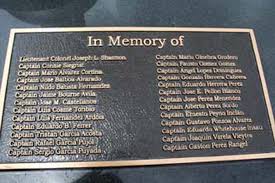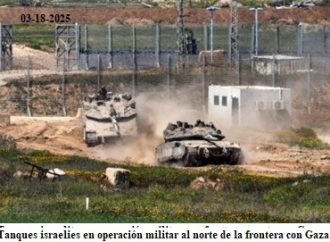NOVEMBER 9, 2016 2:07 PM Unveiled CIA report reveals internal warfare over blame for Bay of Pigs failure Those in attendance had been released through a deal struck with Cuba where the men had been imprisoned for months following the ill-fated invasion in April 1961. Archive photo Cuban exiles, members of the anti-Castro forces, look
NOVEMBER 9, 2016 2:07 PM
Unveiled CIA report reveals internal warfare over blame for Bay of Pigs failure
Instead, it delves into “the war at the CIA in the aftermath of the Bay of Pigs over who was to blame” for the invasion’s failure, according to the professor who filed suit to shake loose the recently released document.
“Essentially, it is a critical history of the [CIA] inspector general’s critical report, which mainly blamed CIA incompetence for the failure of the Bay of Pigs,” said David Barrett, a political science professor at Villanova University in Pennsylvania.
Despite lawsuits and repeated Freedom of Information requests, for more than three decades the CIA stubbornly resisted making public the fifth and final volume in its official history of the failed Bay of Pigs invasion.
But facing another lawsuit and a recent change in FOIA law that limits the time frame to 25 years that agencies may keep internal deliberations confidential under an exemption, the CIA quietly released Volume V online on Halloween.
In a letter accompanying the release of the document called CIA’s Internal Investigation of the Bay of Pigs, no mention is made of a pending lawsuit. Instead, CIA Chief Historian David Robarge said that the release corresponded to the change in FOIA law that “requires us to release some drafts that are responsive to FOIA requests if they are more than 25 years old.”
Volume V was written by Jack B. Pfeiffer, a CIA staff historian, and submitted to the CIA’s Center for the Study of Intelligence on April 18, 1984. In the report, Pfeiffer, who died in 1997, suggests the reason the documents were held so closely was “fear of exposing the agency’s dirty linen, rather than any significant security information.”
…FEAR OF EXPOSING THE AGENCY’S DIRTY LINEN, RATHER THAN ANY SIGNIFICANT SECURITY INFORMATION.
Jack B. Pfeiffer, CIA historian, cited as reason the documents were held so closely
“Pfeiffer blamed the Kennedy White House” and contended the report by Inspector General Lyman Kirkpatrick was itself “biased and incompetent,” said Barrett.
The inspector general’s report, wrote Pfeiffer, “made the unrealistic assumption that CIA’s role in the Bay of Pigs could be examined and valid conclusions drawn without reference to the agency’s continuous interrelations with other U.S. agencies and the White House.”
Volume V — whether flawed or not — is revealing of the egos, the perceived Machiavellian sub-plots of some agency personnel, and the insults that flew in the aftermath of the invasion. Pfeiffer wrote that Volume V would “hopefully put one of [the CIA’s] nastiest internal power struggles into proper perspective for the agency’s own record.”
Among the interesting details in Volume V:
▪ Pfeiffer wrote the inspector general’s report “was a thinly veiled attempt to lay full blame for the failure” on Richard M. Bissell, the CIA’s deputy director of plans and chief architect of the Bay of Pigs operation, and on CIA Director Allen Dulles, rather than an effort to “insure the same mistakes would not be repeated in the future.”
“Those who participated in the operation resented it and attacked [the report] bitterly,” Pfeiffer wrote.
▪ It reveals for the first time the names of the three CIA officers who did the main collection of the information and preparation of the material for the CIA inspector general’s report. They were William Gibson Dildine, Robert D. Shea and Robert B. Shaffer.
Richard D. Drain, chief of operations for the invasion, described the latter two in a conversation with Pfeiffer “as old farts that went to sleep in the middle of briefings; that didn’t know their tails from third base” and were merely going through the motions of collecting meaningful information. Drain also suggested that Inspector General Kirkpatrick appeared to be gunning for Bissell’s job and wanted to lay as much blame as possible on his department.
The DDP issued its own critical analysis of the inspector general’s report.
At one point, Kirkpatrick suggested the only realistic way to evaluate the operation would be to put the inspector general’s report, the DDP report and an earlier report resulting from a John F. Kennedy-ordered investigation that was directed by Gen. Maxwell Taylor into the hands of the an impartial investigator. Reviewed without reference to the Taylor report, Pfeiffer wrote the two CIA “documents appear to be the results of a skunk pissing contest.”
▪ Shaffer, the member of the inspector general’s staff, remembered that Kirkpatrick had directed team members to destroy all working papers related to their information-gathering. Even as Pfeiffer was preparing Volume V, he was told that all the working papers related to the Bay of Pigs Operation survey were destroyed.
But Pfeiffer wrote that “in the spring of 1981, through inquiry of another source, the author of this volume recovered a nearly complete set of the working papers” of the inspection team. “The extreme sensitivity regarding Kirkpatrick’s reports at this time in the agency’s life can only be interpreted as a rear guarding action rather than any serious concern over security.”
Who is to blame for the Bay of Pigs debacle has been debated for more than five decades. It centers on whether a “political decision” by Kennedy not to provide overt air cover to the invading Brigade 2506 ultimately insured the military defeat of the anti-Castro force. During the failed invasion, 114 exiles died and 1,100 men were captured by the Cuban army and militia.
Barrett filed a third FOIA request for an unredacted copy of Volume V on July 1, the day after President Barack Obama signed the FOIA revision into law, and then his lawyer Tuan Samahon filed a lawsuit on Aug. 8 after an unsatisfactory response from the CIA. The next day Volume V was approved for release, but neither Barrett nor Samahon ever received a copy.
“They [the CIA] just went ahead and posted it. No heads up,” Barrett said. “The CIA swears it is in the mail,” Samahon said Wednesday. Now he and his client are seeking filing and attorney’s fees from the CIA.
On April 14, 2011 — the 50th anniversary of the invasion — the National Security Archive filed a lawsuit asking for declassification of all five Pfeiffer volumes. The CIA released four of them but continued to hold on to the 172-page Volume V.
Volume III was actually released in 1998 and sent to the National Archives’ Kennedy Assassination Records Collection. It sat there unbeknownst to the public until Barrett discovered it in a box marked “CIA miscellaneous” in 2005.
Now all five volumes, which were prepared between1979 and 1984, have been declassified and are available to the public in the CIA’s electronic reading room.
In his letter, Robarge cites these reasons for withholding Volume V: “Unlike [Pfeiffer’s] four other histories, this fifth draft volume was not publishable in its present form, in the judgment of CIA chief historians, as well as other reviewers, because of serious shortcomings in scholarship, its polemical tone, and its failure to add significantly to an understanding of the controversy over the Bay of Pigs operation.”
When fighting a previous unsuccessful National Security Archive lawsuit seeking release of Volume V, the CIA contended the release of “an unfinished draft” would confuse the public.
NOW THE PUBLIC GETS TO DECIDE FOR ITSELF HOW CONFUSING THE CIA CAN BE.
Tom Blanton, National Security Archive Director
“Now the public gets to decide for itself how confusing the CIA can be,” said National Security Archive Director Tom Blanton. “How many thousands of taxpayer dollars were wasted trying to hide a CIA historian’s opinion that the Bay of Pigs aftermath degenerated into a nasty internal power struggle?”




















Leave a Comment
Your email address will not be published. Required fields are marked with *